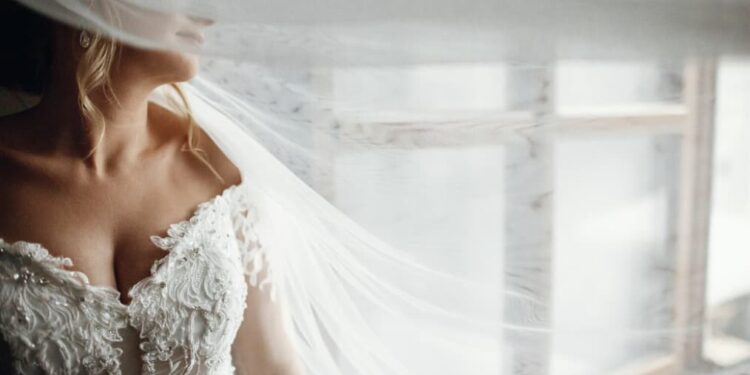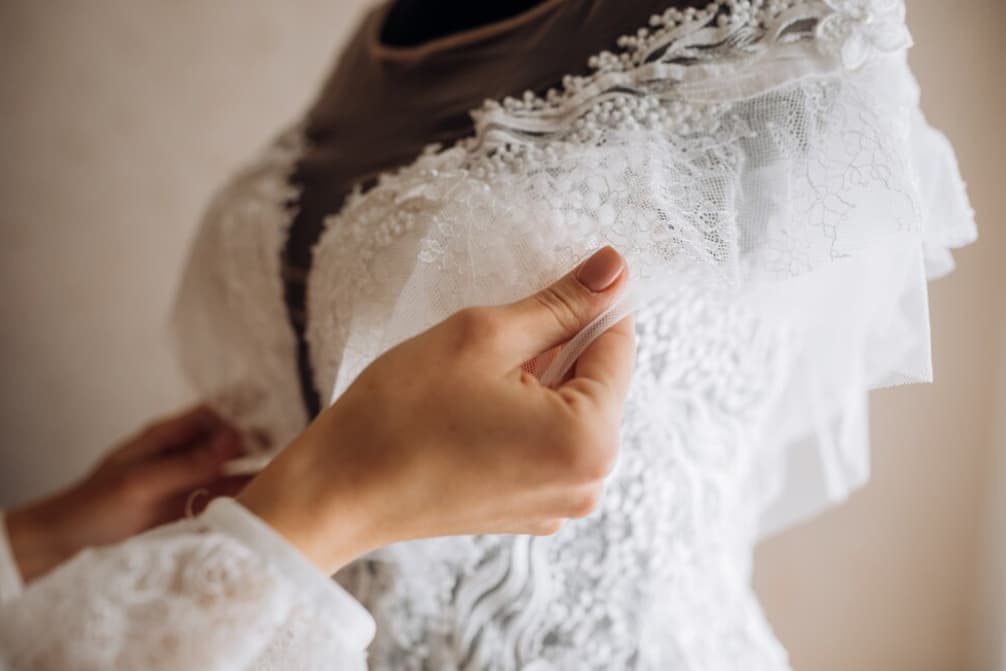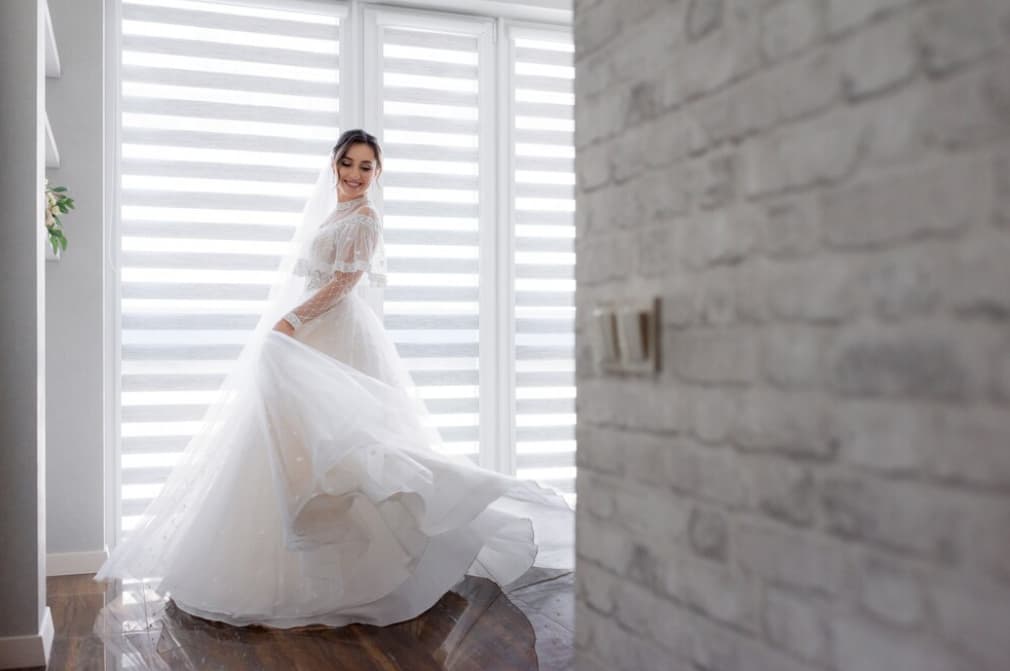
On your special day, the thought of navigating the aisle in a weighty wedding dress should be the least of your worries. Your journey to the altar ought to feel smooth and graceful, not akin to an intense gym session. It begs the question: if comfort is key for your wedding, why are bridal gowns often so hefty?
The weight of a wedding dress is influenced by various elements. The good news is that many of these can be tailored during your bridal fitting. Being aware of your preferences beforehand is crucial to ensure a more manageable dress for your celebration. Let’s delve into the reasons behind the heft of wedding dresses and explore strategies to enhance your comfort throughout the ceremony. In considering how much a wedding dress weighs, especially when planning a microwedding, it becomes clear that even the smallest details contribute to creating an intimate and unforgettable celebration.
The Weight of Bridal Gowns: Key Factors
Wedding dresses can gain significant weight due to various structural features such as the fabric used, decorative details, the length of the train, and others. Typically, a wedding gown can weigh from seven to eleven pounds, though this can fluctuate based on the specific design and intricacies.
Several factors contribute to the substantial weight of wedding dresses, which include, but are not limited to, the following.
Dress Length
Anticipate that a gown with an extended skirt will inherently carry more weight than its shorter counterparts. The presence of a wedding dress train is a notable factor contributing to this added weight. While trains enhance the aesthetic appeal of the gown, providing a touch of elegance, it’s essential to acknowledge that they can pose challenges in terms of mobility. The extended length, although visually captivating, may require careful consideration to ensure ease of movement on your special day.
Wedding Dress Fabric

The choice of fabric significantly influences how comfortably you can move in your wedding dress. Different fabrics have varying weights and textures, impacting both the look and feel of the gown throughout the day. For instance, navigating a day in a voluminous ballgown poses a unique set of challenges due to the substantial amount of material required for its construction, resulting in a noticeable increase in overall weight.
If you’re concerned about the weight of the fabric, it’s helpful to be aware of materials that tend to lean on the heavier side. Here are some fabrics that you might consider avoiding if a lightweight gown is your top priority:
- Faille: This structured fabric, often woven from cotton, silk, or rayon, tends to carry more weight, impacting the overall feel of the dress;
- Heavier Silks: Fabrics like dupioni, gazar, mikado, and moire, which are thicker silk blends, can contribute to a heavier gown compared to lighter alternatives;
- Polyester: While commonly used in bridal gowns, polyester satin, in particular, may be less breathable and slightly uncomfortable, especially in warmer weather;
- Thicker Satins: Dense satin varieties like duchess are better suited for cooler months, given their potential to feel heavier than lighter fabrics;
- Velvet: Although not a traditional wedding gown fabric, velvet’s softness and thickness make it more suitable for fall or winter weddings when a heavier gown is more manageable;
- Lace: While lace adds an elegant touch, certain types like Italian Venise, known for its woven heaviness, can contribute to a gown’s overall weight. The weight of lace depends on the specific type and style incorporated into the dress.
Considerations for Embellishments in Wedding Dresses
The presence of embellishments can significantly impact the weight and overall feel of your wedding gown. Various intricate detailing options contribute to the gown’s aesthetic appeal but also add to its heft. These embellishments may include:
| Embellishment | Impact on Weight |
|---|---|
| Elaborate Embroidery or Lace Appliques | Enhances visual allure but adds to overall weight |
| Heavy Beading or Pearls | Exquisite detailing that contributes to substantial weight |
| Sequins | Dazzling sparkles that contribute to overall heaviness |
| Border Trims | Decorative trims adding visual appeal may add weight |
| Fringe or Ribbon | Stylish details that can impact the gown’s overall weight |
If you’re aiming for a lighter wedding gown, it might be prudent to reconsider or limit these extra embellishments. While they undoubtedly bring beauty and detail to the dress, it’s essential to strike a balance between aesthetics and comfort, ensuring that you feel at ease in your chosen gown on your special day.
Selecting a Comfortable and Elegant Wedding Gown

Understanding why wedding gowns can be heavy is the first step. Now, let’s explore options for a comfortable yet elegant wedding dress. Begin by choosing fabrics that are both light and easy to maneuver in. Options such as charmeuse, chiffon, organza, georgette, shantung, taffeta, and tulle are excellent choices.
- Reducing heavy beading and ornate embellishments is another strategy. While styles like elaborate ball gowns are known for intricate beadwork, opting for simpler designs can significantly lighten your dress. This approach not only reduces weight but can also be more cost-effective;
- Another consideration is the train’s length. Longer trains add weight and length to the gown. Opting for shorter or lighter fabric trains can make your dress more manageable. If you desire a long train for the ceremony but seek comfort during the reception, consider a gown with a bustle feature for easy adjustment;
- Your wedding is a momentous occasion, and comfort is key as you step towards a new chapter in your life. By selecting lighter materials and simpler designs, you can find a beautiful gown that allows you to move freely and enjoy your day to the fullest.
Conclusion
A wedding dress’s weight is a crucial consideration for brides. It varies based on style and materials, but the key is choosing a gown that aligns with the bride’s vision and ensures comfort on her special day, allowing her to radiate confidence and joy as she walks down the aisle.
